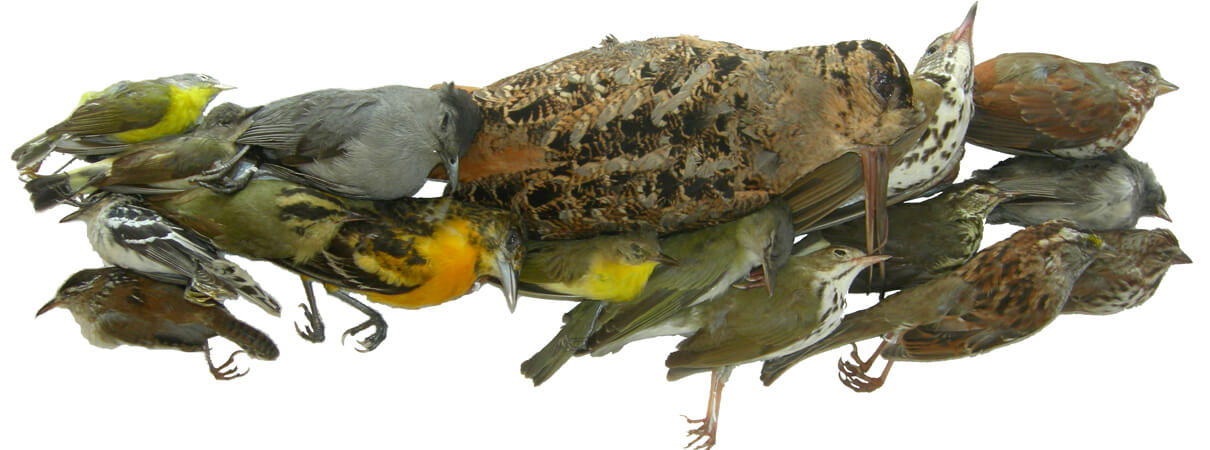The Nature of Threats to Birds
Here's a simple taxonomy of threats to birds. Those that are natural (normal predation, disease, weather events, etc.); those affecting reproduction (nesting habitat loss or degradation); and those affecting the survivorship of adults (everything else). How we think about these in the context of human priorities is critical in understanding the future of birds.
We largely accept natural threats as an unfortunate matter of course. Bird populations have evolved to survive natural threats—unless something else gets out of whack. Robust populations can survive a hurricane, but what about a species whose range has dwindled to a single island? That's why Hurricane Matthew's recent track over the Bahamas has us worried about the Bahama Oriole and the still-recovering Kirtland's Warbler on its wintering grounds.

The vast majority of Kirtland's Warblers—North America's rarest songbird—winter in the Bahamas. Photo by Ron Austing
Threats that adversely affect habitat, such as agricultural expansion and wind energy facilities, are worse because they are normally irreversible. Most habitat lost to development is lost forever; examples of restoration are rare. Some of the best-known conservation groups focus on preventing habitat loss. They do this because it is important and because many people regret habitat loss and support protection for what remains.

A 2013 study identifies pesticides used in agriculture as the most likely cause of the widespread decline in grassland birds in the United States. Photo by BBrown/Shutterstock
It is the “everything else” category—free-roaming cats, pesticides, wind turbines in migratory corridors— that causes most man-versus-birds problems. Although addressing these non-habitat threats sometimes requires policy action, our government friends, barred from advocating for policy positions, cannot touch these issues, much as they may care. So the job of protecting birds falls to a subset of conservation nonprofit groups and concerned citizens.

In the United States alone, cats kill an estimated 2.4 billion birds every single year. Photo by Thijs Schouten Fotografie/Shutterstock
Further complicating matters, some ecologists and ornithologists are susceptible to the canard that a threat to birds is unimportant unless a demonstrable “population level effect” exists. What's a few birds lost to window collisions in the larger scheme of things, these scientists think. (In fact, it's billions each year.)
We should put this myth to rest. What really matters is the cumulative effect of all threats on bird species' populations— especially the 40 percent or so that are now in decline. Such callousness for individual birds is perilous in considering the future of conservation (including the latest Congressional threats to the Endangered Species Act).

As many as one billion birds are killed every year in the United States when they collide with windows. Photo by Daniel Lebbin
Addressing threats to birds has been a major component of ABC's work since our very beginning. Our Cats Indoors program is now in its 20th year. And we continue to take on the toughest challenges for birds, whether it's opposing poorly sited wind energy projects or developing bird-friendly building guidelines for architects.
We've learned that reducing threats to birds is a lot like stopping cigarette smoking: It is the work of decades, requiring endurance and persistence.

Tens of thousands of wind turbines are in operation across the United States.
The lesson here is that we can develop solutions that both protect wildlife and serve people. Sometimes it's difficult to find those solutions, and sometimes the solutions are not perfect. But they are always there if we work hard to find them.

George H. Fenwick, President, American Bird Conservancy
Editor's note: This article first appeared in the winter 2016-2017 issue of Bird Conservation magazine.


















































